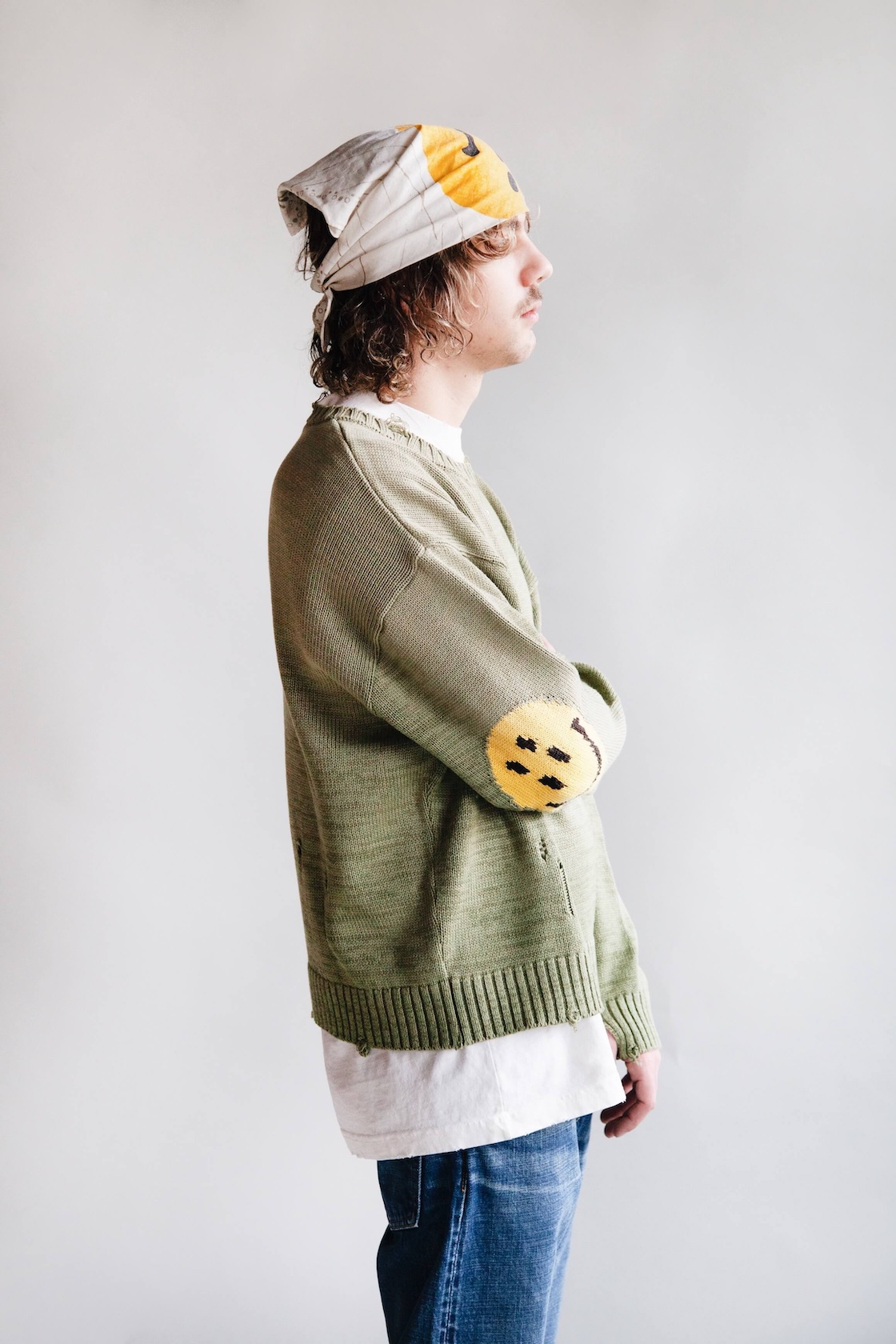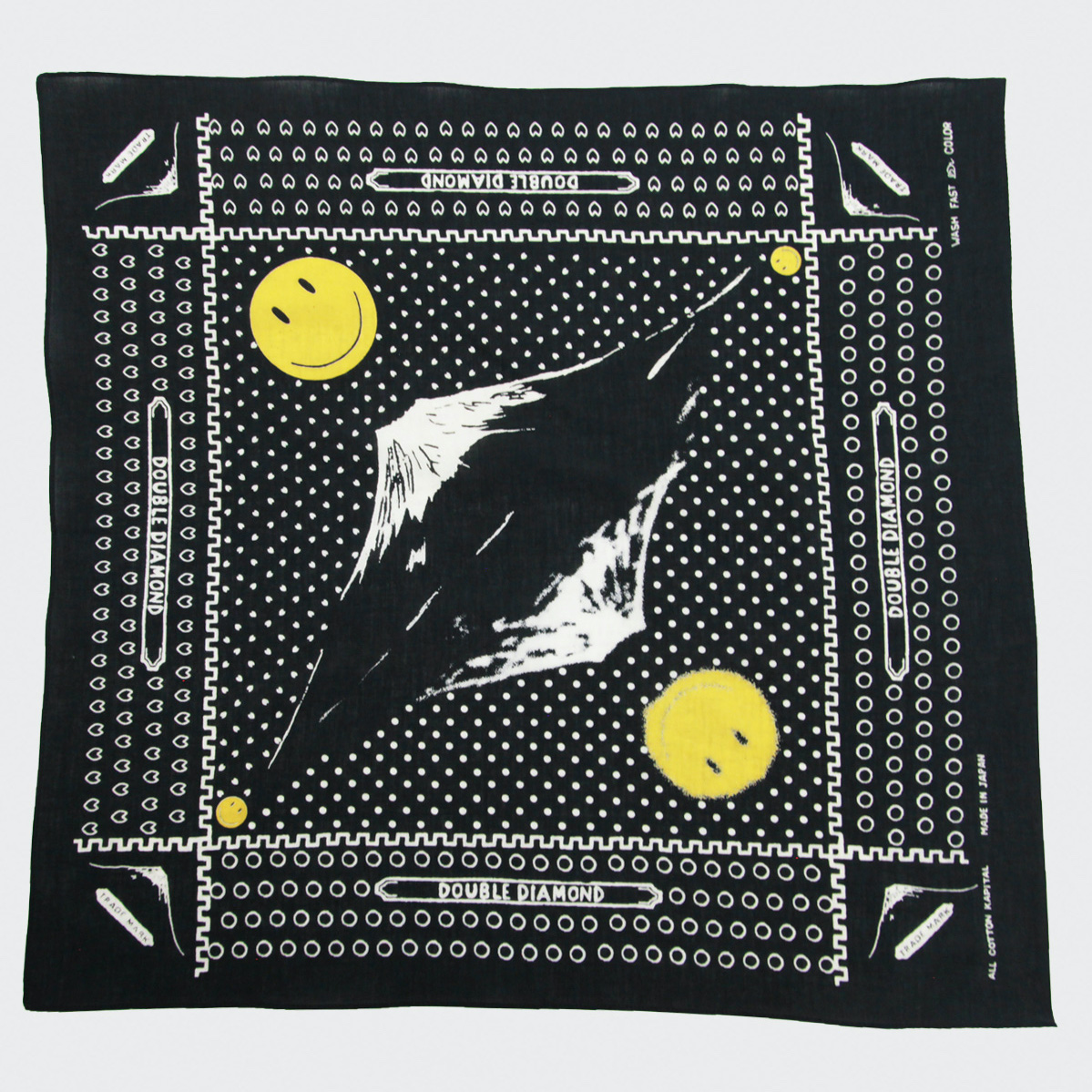All the Details: Kapital Smilies
Kapital’s Smilies have been appearing on clothing since Kiro Hirata took over design in 2002. His father, Toshikiyo Hirata had been developing Japanese denim to rival pre-industrial American jeans since 1984 under the brand Capital with a letter ‘C’. Based in Japan’s denim capital of Kojima, the name was changed to its current spelling in 2001 and marks Kiro Hirata’s arrival and the change in aesthetic direction he brought with him.

The soul of the brand has always been blue denim. But it’s a different denim than you can find anywhere else - done in the most complicated way possible (eg. Kapital’s sashiko stitched Century Denim). As a designer, Kiro Hirata seems to go to any length to have fun and experiment. His art takes humor seriously - going to ridiculous production efforts - and what emerges is often provocative and challenging, but always a bit playful. There is such a heavy mix of design elements, nods to cultural movements and styles, and the whole world history of construction techniques that it’s hard to discover all of the disparate collage of inspirations involved. Kapital connects it all.
Neither Toshikiyo or Kiro Hirata planned to be clothing designers. Toshikiyo Hirata moved to America to compete in, and teach, karate. While there, he caught the bug for vintage American denim. When he returned to Japan, he moved to Kojima to learn how to make blue jeans. The traditional pedagogy in Japan is to “copy to innovation.” A novice studies under a master for years until they perfect the lesson; then they make their own way, building on the past and evolving the artform. Eventually, Toshikiyo got sick of making copies of American jeans and wanted to create something even better than Levi’s. In 1996, he released the first pair of Capital denim, the eponymous “TH” model.
This was the world that Kiro Hirata grew up in - his parents working long hours in a denim factory. After finishing secondary education and looking for something different, Kiro went to America to study painting and art history. But like his father before him, he found a passion for vintage hunting. When he returned to Japan, he began designing for 45rpm. In 2002, he officially joined his father and began to make a new name and unique voice for the Kapital brand.



The Smilies
As a symbol, the Smiley Face has been around since the 60s - sometimes as an homage to hippie culture, often reinterpreted and recycled, and commonly subverted. Invented by graphic designer Harvey Ball in 1963 as an attempt to cheer up cubicle workers for a life insurance company, it was created without marketing intent and therefore was never copyrighted.


Top: Graphic designer Harvey Ball and his Smiley Face. Bottom: The original Smiley Face pin created for an insurance company.
In 1970, brothers Murray and Bernard Spain unearthed that beaming yellow ball of positivity, slapped the words “Have a Nice Day” under it and began churning out merchandise at an industrial scale, selling an estimated 50 million smileys in under a decade. It had become an icon. And what do you do with an icon? You play with it and subvert it for other purposes.
Subcultures began to see something more sinister beneath the peace and love intent of the symbol, a sort of plastic falsity within consumer culture. From punk rock to Banksy, the smiley face has been used as social commentary for decades since its introduction. One of its most popular subversions was characterized by its use as the symbol for the complicated antihero The Comedian in Alan Moore and Dave Gibbons’ 1986 masterpiece Watchmen.





Top Row: 1970s Smiley Face, the 1977 Talking Heads Psycho Killer Single, Nirvana's smiley face promo for Nevermind Middle: Panel from Watchmen splattered with "human bean juice" Bottom: Banksy's "Grin Reaper"
Although Kapital is known for playing with some subversive themes and cultural content, it seems that their use of the smiley within the collections is authentically positive.
To quote Kiro Hirata when asked about the Smilies in a recent GQ article, “‘Hippie culture,’ he says. ‘So awesome.’”
One of the things that Kapital does so well is to recreate and reinvent simultaneously. “My father mastered the reproduction of American workwear in his generation. In our generation, our work is evolving from ‘workwear’ to ‘powerwear,’” said Kiro in an interview.





Kapital doesn’t give a lot of information about any of their designs or intentions. There’s a clear preference to promote personal interpretation of the art. But some of it, we can make well-educated guesses about…
The Rain Smile
Kapital uses two different smileys in their designs. The first one is the one we’re all familiar with, but the second has an extra set of alien eyes. Or are those tears? There are a few different interpretations that have floated around through the years and Kapital isn’t trying to change your mind about yours, but there are a few clues and references that have cropped up over time and are hidden around the internet.



In an early post on their website about the Rain Smile bandana, Kapital wrote, “it is a KAPITAL original smiley face made based on the kanji ‘rain’ and is called ‘rain smile.’” Kanji is one of the three scripts used in the Japanese language and the symbol for rain is 雨. Notice the four dots and the smile-like curl beneath the second set. Kapital goes on to say, “It is a bandana with a wish to laugh at the rainy season in Japan and spend it carefully.”


For a little context, Japan’s rainy season is an annual rite of passage akin to how midwesterners feel about winter. Caused by a collision of cold northerly and warm southerly air masses, Japan gets hit for several weeks of consistently damp weather that tends to sour moods.
That’s a compelling argument for the origin of the four eyed smiley, but even with a few quotes directly from the source, it’s still just a guess. How you wear it is always going to be a personal interpretation.








The smilies appear all over Kapital’s collections, knitted into sweaters at the elbows, at the heels of socks, peeking out from seams and printed on tees - these smilies are little tokens of playful joy - another one of those extra elements that makes Kapital a compelling brand to see and wear.
